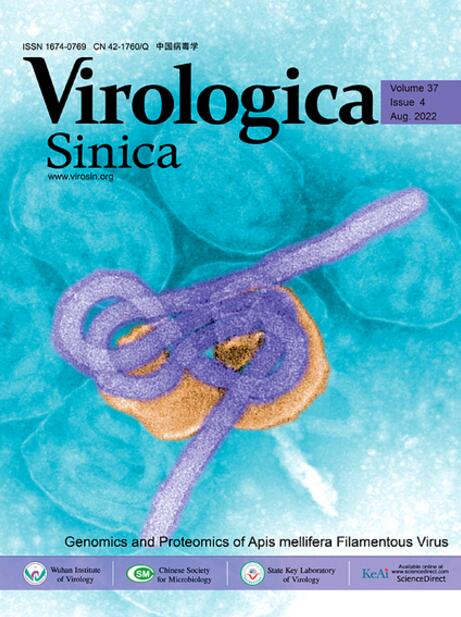Phylogenitc analysis and immunogenicity comparison of porcine genotype G9 rotavirus in China from 2020–2023
IF 4
3区 医学
Q1 Medicine
引用次数: 0
Abstract
As an emerging genotype, the G9 genotype rotaviruses (RVs) are widespread among humans and pigs, and have been reported in many countries and regions in the recent years. Moreover, porcine G9 strains could cross the interspecies barrier to infect human. To investigate the epidemic trends of porcine G9 strains as well as the cross-immunoreactivity among different isolates, an epidemiological investigation about porcine G9 genotype RVs (PoRVs) was performed during the period 2020–2023 in multiple provinces of China. A total of nine representative strains were identified. The phylogenetic analysis based on viral VP7 gene showed that these strains mainly clustered with lineages III and VI, which revealed the predominant G9 PoRVs in China. Moreover, a new lineage, lineage VII, was identified, and strains of this lineage were found to be circulating in Guangdong and Taiwan. Except lineages I and IV, some isolates from other lineages could co-circulate in pigs and humans. Three G9 strains, namely 923H, 923E, and 923X, which belonged to the largest sub-lineage III, were isolated. Then, the significant cross-reactivity was observed among strains of the same or different lineages. This study is the first to systematically investigate the genetic and immunogenetic characteristics of porcine G9 genotype rotavirus in China, as well as the potential cross-species transmission between pigs and humans, providing a valuable direction for the effective prevention of porcine rotavirus.
2020-2023年中国猪基因型G9轮状病毒系统发育分析及免疫原性比较
G9基因型轮状病毒(RVs)是一种新兴的基因型,广泛存在于人类和猪群中,近年来在许多国家和地区都有报道。此外,猪G9菌株可以跨越种间屏障感染人类。为了解猪G9菌株的流行趋势及不同分离株间的交叉免疫反应性,对2020-2023年中国多个省份的猪G9基因型RVs (PoRVs)进行了流行病学调查。共鉴定出9株代表性菌株。基于病毒VP7基因的系统发育分析表明,这些病毒主要聚集在III和VI谱系中,显示了G9型病毒在中国的优势。此外,还发现了一个新的世系,即世系VII,该世系在广东和台湾流行。除系I和系IV外,其他系的部分分离株可在猪和人之间共传播。分离到3株G9菌株923H、923E和923X,属于最大的III亚系。然后,在相同或不同谱系的菌株之间观察到显著的交叉反应性。本研究首次系统研究了中国猪G9基因型轮状病毒的遗传和免疫遗传学特征,以及猪与人之间潜在的跨种传播,为有效预防猪轮状病毒提供了有价值的方向。
本文章由计算机程序翻译,如有差异,请以英文原文为准。
求助全文
约1分钟内获得全文
求助全文
来源期刊

Virologica Sinica
Biochemistry, Genetics and Molecular Biology-Molecular Medicine
CiteScore
7.70
自引率
1.80%
发文量
3149
期刊介绍:
Virologica Sinica is an international journal which aims at presenting the cutting-edge research on viruses all over the world. The journal publishes peer-reviewed original research articles, reviews, and letters to the editor, to encompass the latest developments in all branches of virology, including research on animal, plant and microbe viruses. The journal welcomes articles on virus discovery and characterization, viral epidemiology, viral pathogenesis, virus-host interaction, vaccine development, antiviral agents and therapies, and virus related bio-techniques. Virologica Sinica, the official journal of Chinese Society for Microbiology, will serve as a platform for the communication and exchange of academic information and ideas in an international context.
Electronic ISSN: 1995-820X; Print ISSN: 1674-0769
 求助内容:
求助内容: 应助结果提醒方式:
应助结果提醒方式:


